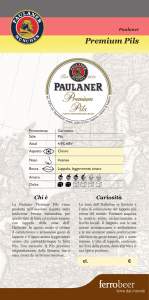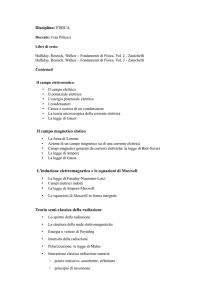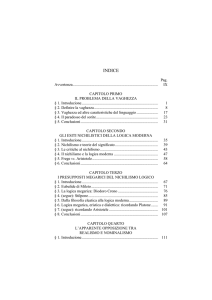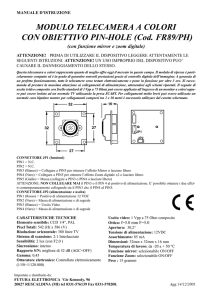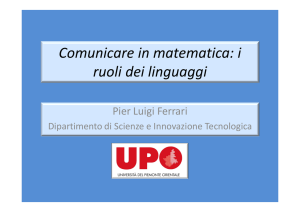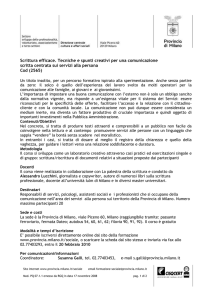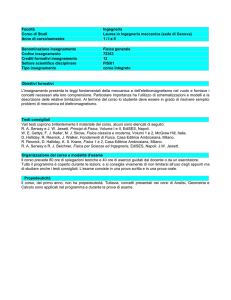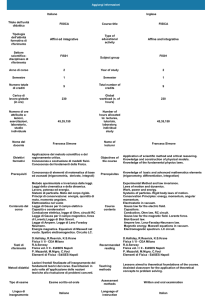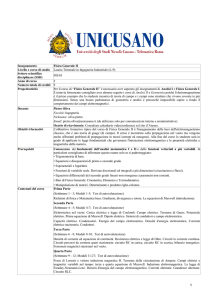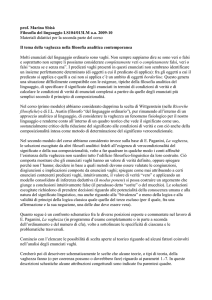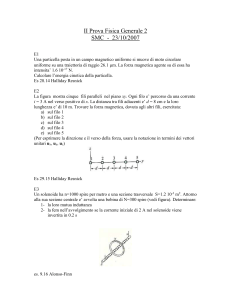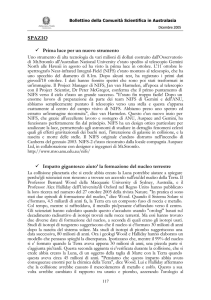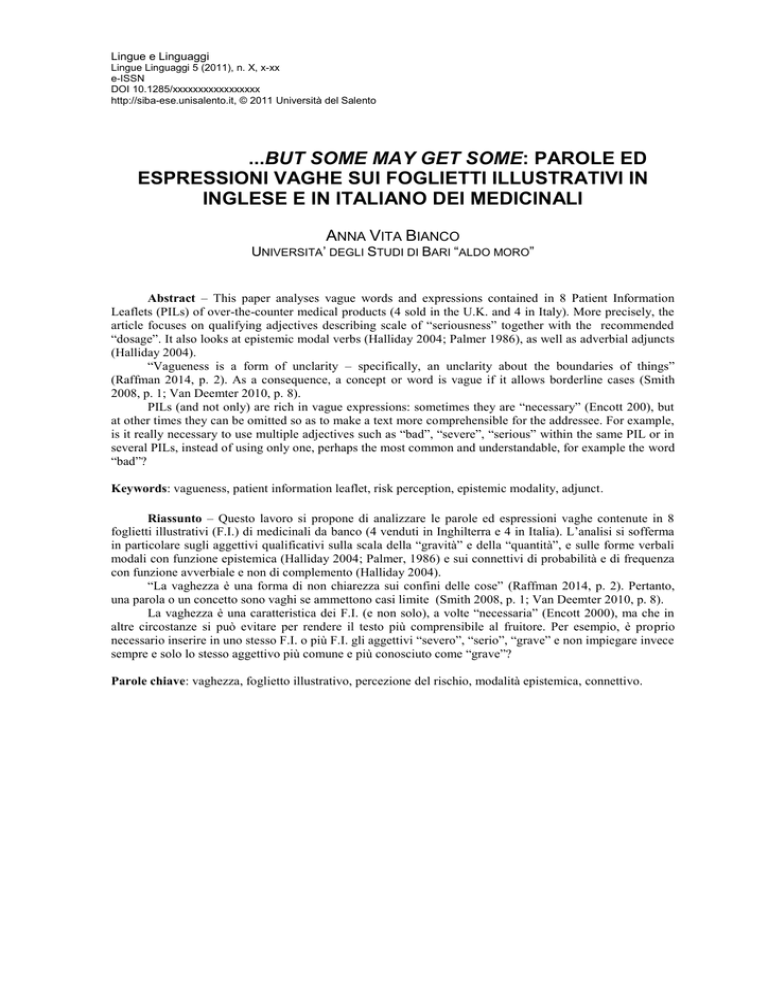
Lingue e Linguaggi
Lingue Linguaggi 5 (2011), n. X, x-xx
e-ISSN
DOI 10.1285/xxxxxxxxxxxxxxxxx
http://siba-ese.unisalento.it, © 2011 Università del Salento
...BUT SOME MAY GET SOME: PAROLE ED
ESPRESSIONI VAGHE SUI FOGLIETTI ILLUSTRATIVI IN
INGLESE E IN ITALIANO DEI MEDICINALI
ANNA VITA BIANCO
UNIVERSITA’ DEGLI STUDI DI BARI “ALDO MORO”
Abstract – This paper analyses vague words and expressions contained in 8 Patient Information
Leaflets (PILs) of over-the-counter medical products (4 sold in the U.K. and 4 in Italy). More precisely, the
article focuses on qualifying adjectives describing scale of “seriousness” together with the recommended
“dosage”. It also looks at epistemic modal verbs (Halliday 2004; Palmer 1986), as well as adverbial adjuncts
(Halliday 2004).
“Vagueness is a form of unclarity – specifically, an unclarity about the boundaries of things”
(Raffman 2014, p. 2). As a consequence, a concept or word is vague if it allows borderline cases (Smith
2008, p. 1; Van Deemter 2010, p. 8).
PILs (and not only) are rich in vague expressions: sometimes they are “necessary” (Encott 200), but
at other times they can be omitted so as to make a text more comprehensible for the addressee. For example,
is it really necessary to use multiple adjectives such as “bad”, “severe”, “serious” within the same PIL or in
several PILs, instead of using only one, perhaps the most common and understandable, for example the word
“bad”?
Keywords: vagueness, patient information leaflet, risk perception, epistemic modality, adjunct.
Riassunto – Questo lavoro si propone di analizzare le parole ed espressioni vaghe contenute in 8
foglietti illustrativi (F.I.) di medicinali da banco (4 venduti in Inghilterra e 4 in Italia). L’analisi si sofferma
in particolare sugli aggettivi qualificativi sulla scala della “gravità” e della “quantità”, e sulle forme verbali
modali con funzione epistemica (Halliday 2004; Palmer, 1986) e sui connettivi di probabilità e di frequenza
con funzione avverbiale e non di complemento (Halliday 2004).
“La vaghezza è una forma di non chiarezza sui confini delle cose” (Raffman 2014, p. 2). Pertanto,
una parola o un concetto sono vaghi se ammettono casi limite (Smith 2008, p. 1; Van Deemter 2010, p. 8).
La vaghezza è una caratteristica dei F.I. (e non solo), a volte “necessaria” (Encott 2000), ma che in
altre circostanze si può evitare per rendere il testo più comprensibile al fruitore. Per esempio, è proprio
necessario inserire in uno stesso F.I. o più F.I. gli aggettivi “severo”, “serio”, “grave” e non impiegare invece
sempre e solo lo stesso aggettivo più comune e più conosciuto come “grave”?
Parole chiave: vaghezza, foglietto illustrativo, percezione del rischio, modalità epistemica, connettivo.

